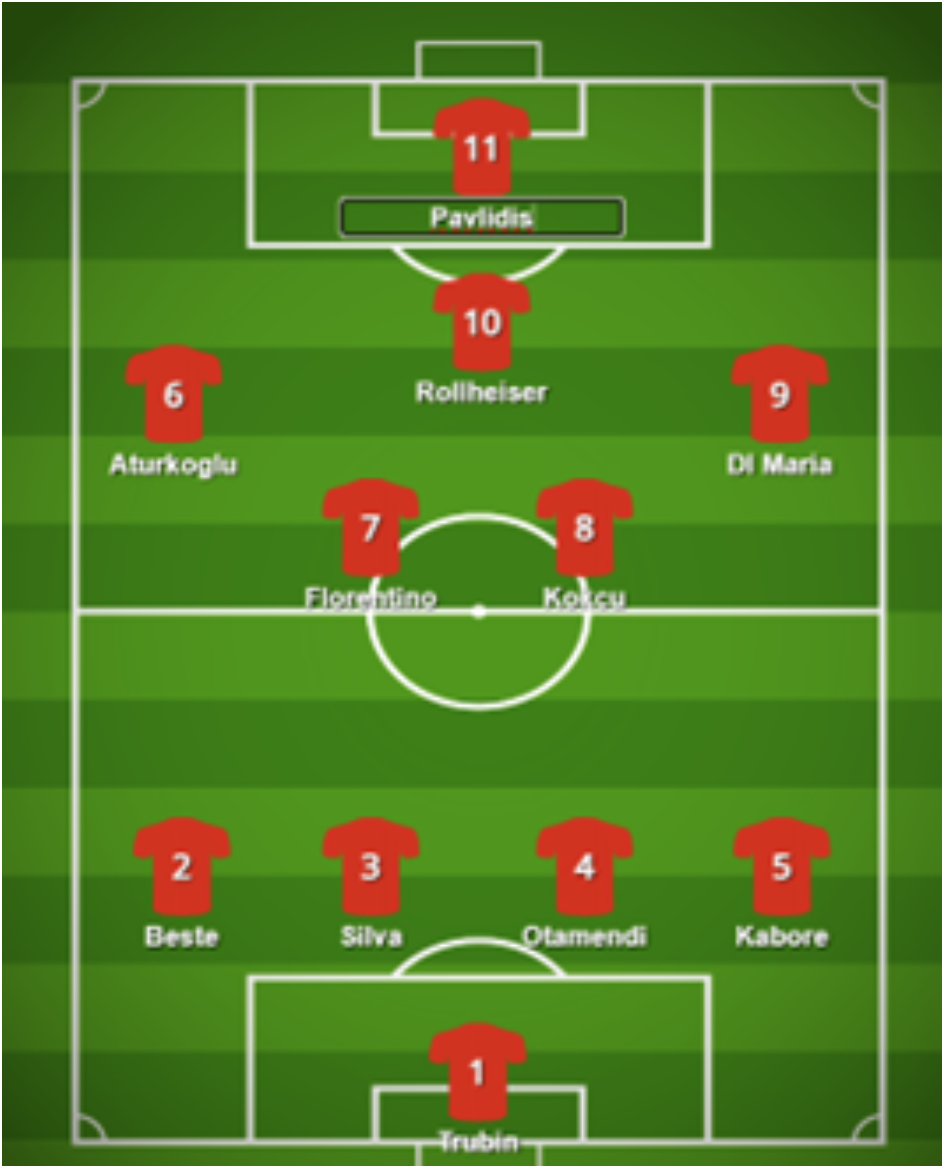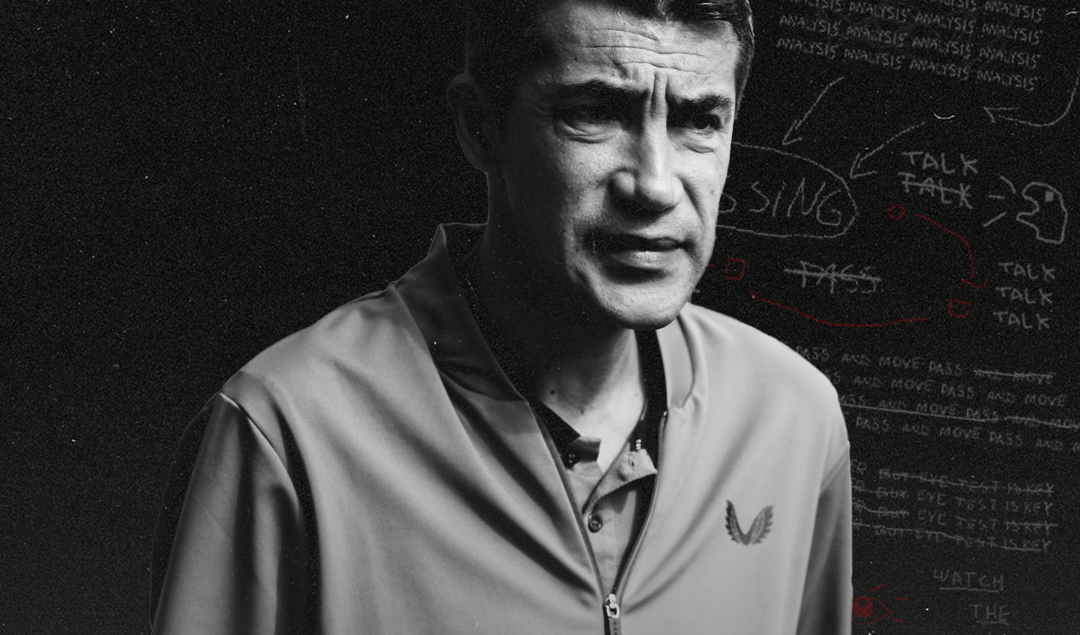The Second-Coming of Bruno Lage at Benfica
Rivalries are the best and worst thing about football. When you’re winning, it’s perfect. Bragging rights, trophies and parades galore, magical. When you’re losing, it’s the absolute worst. For the fans, indignity and abuse. For club management, the eternal dilemma of “how do we get back on top?” knowing failure means years in the wilderness.
One such club who finds themselves in this unenviable position right now in Benfica. A European heavyweight with a rich history, Benfica are the most successful side in Portugal. They’ve won the Primeira Liga an astonishing 38 times, 8 more than northern rivals Porto and almost double Lisbon rivals Sporting (20).
Unfortunately, the Reds have begun to suffer from an identity crisis. High player turnover has meant the club have struggled to cement an identity since 2019. As a result, they’ve had more managers since 2019 (4) than the previous ten years (2) and this has started impacting performances. The club has failed to win the league more than once over that period (poor by their standards).
While stagnation itself is never good, it gets worse. Crosstown rivals Sporting became a powerhouse. Sporting’s manager, Ruben Amorim, is a genius. Hired in 2020, he led the team to their first division title in 19 years during his first season in charge before dominating the league last season. He’s built a young, promising side led by a talismanic striker in Viktor Gyökeres.
Sporting are showing serious signs of entering a golden era. Understandably it’s set alarm bells ringing on the other side of the IP7. And so, the million dollar question. How to tame the lion? The answer, bring back the lion tamer, former manager Bruno Lage.
António Silva: The Lowdown on Benfica’s Prodigious Center Back
The Return of the King?
Bruno Lage has Benfica in his blood. After a forgettable playing career, Lage started working at Benfica as a youth coach in 2004. He stayed at the club for 8 years before deciding to try his luck abroad, moving to UAE before following Carlos Carvalhal to England. Alas, he simply couldn’t stay away and by July 2018 he was back in Lisbon, coaching Benfica’s B team.
However, fate intervened. In January of 2019 Benfica were struggling, stuck in 4th place and with no hope of winning the league. To try and fix the problem they fired Rui Vitoria and turned to Lage to fix the problem. It worked.
Lage’s 4-4-1-1 formation, designed to maximise wonder kid Joao Felix, was unstoppable. As well as winning the league he won 94% of his matches and equalled the clubs record for goals scored in a season (103). Unfortunately, that proved to be a high point. The following season was one of the clubs worst, costing Lage his job. Spells in England and Brazil were no better, by October 2023 he was unemployed.
Thankfully, timing is everything. After a lackluster 2023/24 season and an unconvincing start to this season Benfica decided they needed a new manager. Lage, kicking his heels at home, jumped at the chance to return, determined to prove that his first season as the rule, not the exception.
The Mediocre Eagles
But now that Lage is back, what’s he returned to? Benfica’s problems over the last few years are best summed up by a word familiar to all Portuguese clubs, transition. Player trading is a fact of life in Portugal, but Benfica have turned it into an art form, making an estimated 750m in transfer profit in the last decade.
While that’s great for their balance sheet, constant change is a manager’s nightmare. The club is reliant on good scouting to stay competitive, something that doesn’t always work and the team suffers as a result. This means the Eagles first eleven is in a constant state of change, whether that change is:
- Nonexistent
Lage, known for his defensive solidity, is likely to be happy with the defenders he’s inherited. Three of last season’s back four, including star centre back Antonio Silva, are returning and the club have spent big to replace departing left/centre back Morato, bringing in Alvaro Carreras and Jan Niklas-Beste.
Between the sticks should be a safe area too, young goalkeeper Anatoly Trubin led the Primeira in clean sheet percentage last season (46.4%).
- Major
Benfica’s midfield last season was special. In the double pivot, defensive midfielder Florentino Luís was a wall, killing all opposition attacks dead, star boy Joao Neves ranked 4th in passes into the final third and Orkun Kökçü was 6th in progressive passes. In front of them, David Neres, Rafa Silva and Angel Di María were clinical, bagging 84 goal contributions.
Unhelpfully, Neves, Neres and Rafa were all sold this summer. The club has lost one of its most creative forces, top scorer and 57 goal contributions. Now, the club hasn’t been idle to fix the issue. They’ve signed 3 new wingers and 3 central midfielders. But this has created new problems.
Of the 3 new wingers Benfica have signed, only one (Kerem Aktürkoğlu) appears to have hit the ground running. For a team reliant on direct play from its wingers, this is problematic.
Centrally, the club has replaced expert passer Neves with box to box midfielder Leandro Barreiro (genuinely the first player I’ve come across from Luxembourg). While Barreiro has plenty of talent his lack of skills in possession make the team’s ability to progress the ball through midfield very difficult. It’s easy to see why this is likely to be a big area of focus.
- Minor
While it only needs some minor tweaks (unlike the midfield) Benfica’s front line looks very different to last season. Only one striker that scored 4 or more goals last season is still there, Arthur Cabral. To help shoulder the burden, the club have signed Greek striker Vangelis Pavlidis. There’s a lot riding on Pavlidis adapting quickly to life in Portugal, goals usually take the pressure off a new manager.
Speaking of the manager…
The Tactical Shapeshifter
Perhaps Lage’s biggest strength is his pragmatism. He’s more than willing to alter his formation depending on his players strengths. At Benfica, Lage favoured a 4-4-1-1 that allowed him to maximise the skill set of emerging wonderkid Joao Felix. At Wolves he used no less than seven different formations. With that being the case his formation might change, but the key principles will remain the same.
Out of Possession – Defensive principles
Lage’s other biggest strength is that he’s a defensively solid coach. When Lage’s team don’t have the ball in the attacking third, they adopt starting positions that force the opposition to go long. When this happens and the ball advances into the middle third, the formation begins to compact, and players focus on blocking passing lanes and pressuring opposition players, forcing them to make mistakes that Lage’s team can then aggressively exploit.
If the opposition are then able to advance the ball into the defensive third, Lage’s team will adopt a low block and the formation becomes a narrow, compact 5-4-1 with wide players adopting deep positions and any forwards other than the central striker dropping into midfield.
This, combined with a hybrid man/zonal marking policy ensures that players can swarm to the ball, generating a high number of defensive pressures and tackles making opposition shots on target very hard. It’s an extremely effective system that gets results. During his title winning season, Benfica conceded the 2nd least goals in the division (31) while in his first season at Wolves they conceded the 4th fewest goals in the Premier League (43).
Benjamin Rollheriser: From the Heart of La Plata to the Coast of Portugal
In Possession – Attacking principles
While he’s rightly praised for his defensive solidity, Lage’s attacking record isn’t the best… Lage’s attacking record is, to put it mildly, volatile.
Are we going to get the record-breaking Benfica that scored 103 goals or the stale and boring Wolves side that ranked 17th and 20th for goals scored? I actually think it’ll be closer to his first spell at Benfica, for two reasons:
- Wolves massively underperformed their xG stats, suggesting the players had the goal-scoring allergy, not the system.
- The club’s new attackers might need some coaching, but they’re likely to be much better than what was available to Lage at Wolves.
- Lage’s tactics are much more effective in Portugal
During his first spell at Benfica, Lage used a 4-4-1-1 formation, when the team was in possession it turned into a 2-2-5-1. Blessed with a perfect combination of deep lying playmaker (Gabriel) and defensive destroyer (Andreas Samaris) in the heart of his midfield, Lage’s build up play involved getting the ball to his deep-lying central midfielders who would then take up positions in front of the back four. This new defensive screen allowed Benfica’s full backs, Álex Grimaldo and André Almeida to push into more advanced roles while the two wingers moved into the half spaces on their side of the field.
Gabriel could then choose either to distribute the ball out wide, creating an overload vs the opposition full back and generating crossing opportunities, or give the ball to Joao Felix centrally and watch the magic happen. It was devastatingly effective and saw 5 players score at least 15 goals while another 4 generated double digit assists.
So What Will He Do This Time?
Lage is very likely to adopt some form of his old system during his 2nd spell, likely switching between his traditional 4-4-1-1 and a 4-2-3-1 and praying it works a 2nd time. I think the formation’s going to be what Lage has used already, with one big possible change.

Trubin and Silva’s places are guaranteed short of injury while Otamendi gets the nod despite his advancing years. He’ll likely be phased out, but his experience is vital. Kaboré’s pace and Beste’s passing skills should allow them to get into advanced positions and open up crossing opportunities into Pavlidis.
In midfield, Florentino is the perfect defensive screen while Kokcu’s creativity will allow him to dictate play from deep. Aktürkoğlu will be expected to drift inside and create goal scoring opportunities from inside with Rollheiser, or his replacement if he isn’t clinical enough, while Di Maria’s crossing ability will generate further overloads on the right hand side.
Up front, Pavlidis’s attributes as a target man mean he’s perfect to put away the masses of crosses this formation should generate while his ability to make runs in behind will allow the team to generate chances off of long balls.
Great, Will it Work?
This is a two-part answer. Firstly, I think that Lage will keep Benfica competitive. He’s at a team he knows well and in a league his methods work well in so I think they’ll challenge for 2nd place. Will he win the league? Absolutely not.
While he’s had success, he also lost his job for a reason. Amorim’s style and the quality of his players are simply too strong, and I think trying to beat Sporting using a method that’s worked before will ultimately fail. Then when the inevitable sales happen, who knows how bad it’ll get…
By: Kieran Alder / @The_Own_Goal
Featured Image: @GabFoligno / Jack Thomas – WWFC / Wolves
